Are you looking for ideas for teaching money to first graders? Students LOVE to learn all about money and apply the knowledge to real life experiences. BUT, counting coins is tricky! It requires students to remember values of different coins and skip count in different ways. In this blog post, I’m going to share tons of hands-on money activities, lessons, and games. I’ll also share tips and strategies for introducing counting coins and teaching money to first graders. Plus grab a FREE money anchor chart and activity!
A note on Money standards in 1st and 2nd Grade:
In the common core, money is not introduced until 2nd grade. HOWEVER, it is so helpful for students to have background knowledge on the coins and their values going into 2nd! It is also included in many state standards such as the TEKS.
Want your teaching Money unit planned for you? You can find all of the lessons, activities, anchor charts, worksheets, and centers in my Guided Math First Grade Money resource! I created it for first grade, but it would also be perfect as an introduction to money in 2nd grade as well!

Teaching Money to First Graders Tips and Strategies
Money Tip 1: Practice Skip Counting for foundational money skills
Before your coin unit begins, give your students lots of practice with SKIP COUNTING! This is something you can work on all year long! Having these skills will make counting those mixed coins a piece of cake!
Give students daily practice counting by 1s, 5s and 10s. Also challenge students to switch between them.
For example, have students start counting by 10s. After a few numbers call out, STOP. Switch to 5s and count on. The stop and count on by 1s.
10, 20, 30, 40 STOP 45, 50, 55, STOP 56, 57, 58, etc!
I love doing this as a small group warm up throughout the year so I can differentiate for my students at different levels. I usually give my students a 120 chart so that they can move their finger to each number and notice a pattern as we count.
,
Teaching Money Tip 2: Use real coins
For your money unit, I suggest using real coins! It is so helpful for students to have experiences exploring, sorting, and counting real coins.
My favorite small group activity when learning to count coins is Coin Cups!
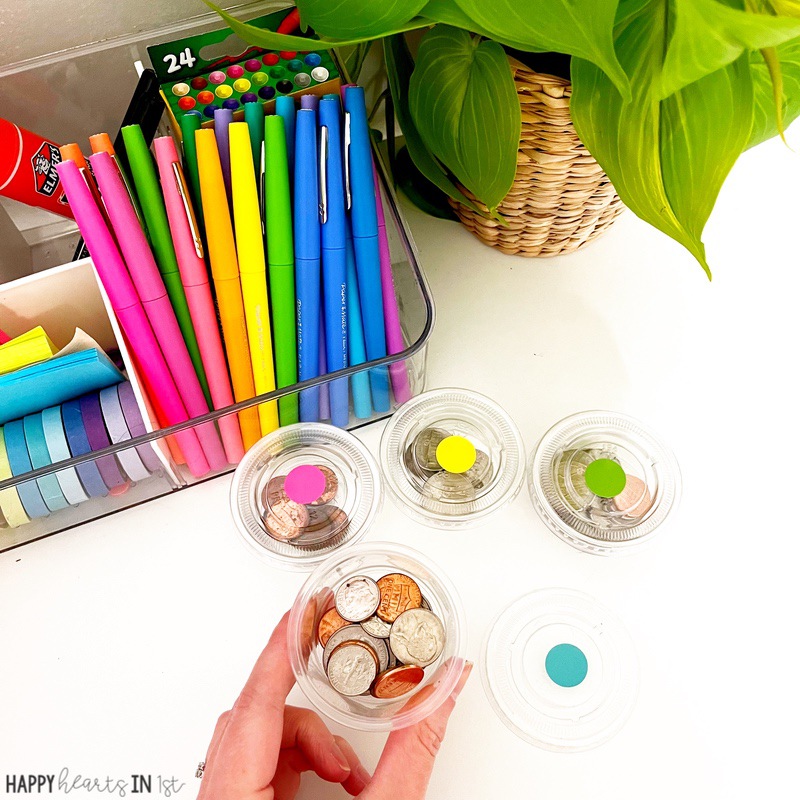
We use coin cups during our guided math small group time. I use small plastic cups and put a collection of coins into each cup. I like to have enough coin cups for each student in my small group.
How to Use Coin Cups:
- Give each student in your small group a Coin Cup
- Have students dump the coins onto their math mat
- Practice identifying, sorting, and counting the coins
- To practice counting different amounts, have students pinch or pour some of the coins on their mat, count, and repeat!
I like to use Math Mats to practice sorting and counting our coins!
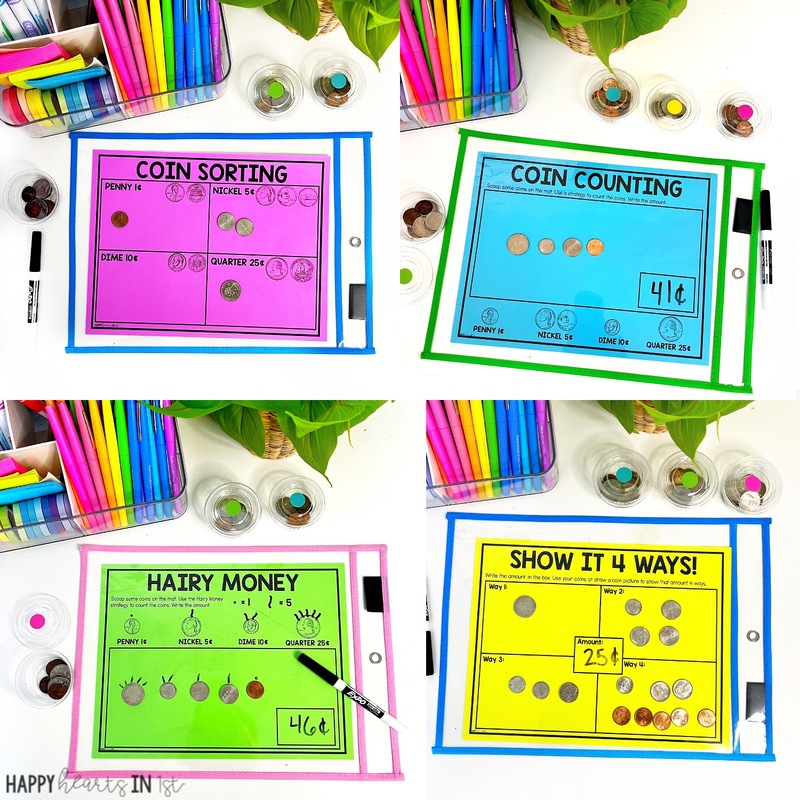
We also want students to be able to identify and count pictures of coins, so it is important to practice both! I like to use coin cards with both color and black and white versions of the coins.
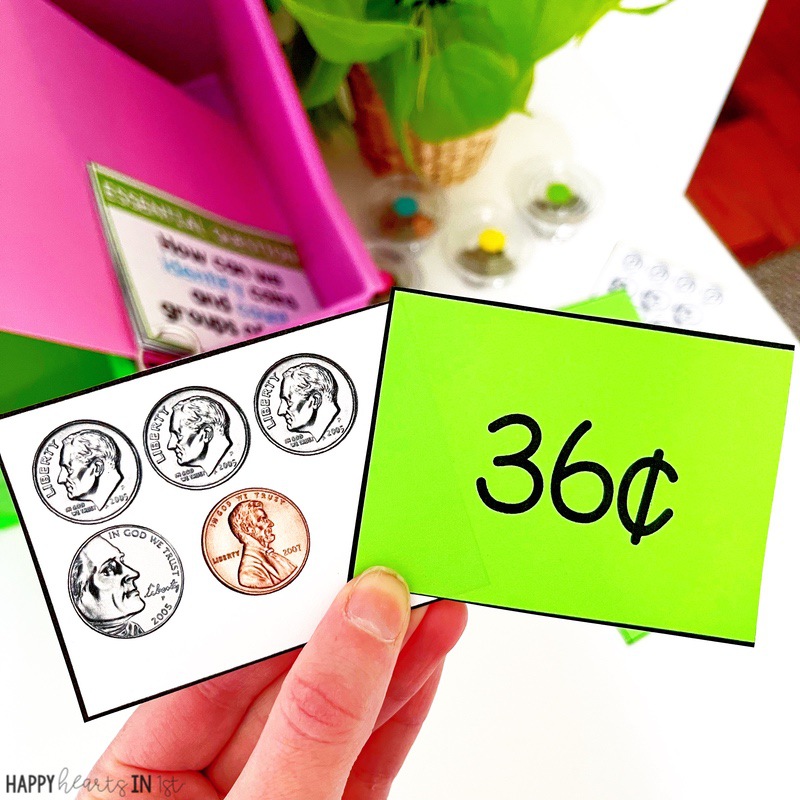
I always teach my students to make simple coin pictures. This allows them to re-order coins to make it easier for them to count.
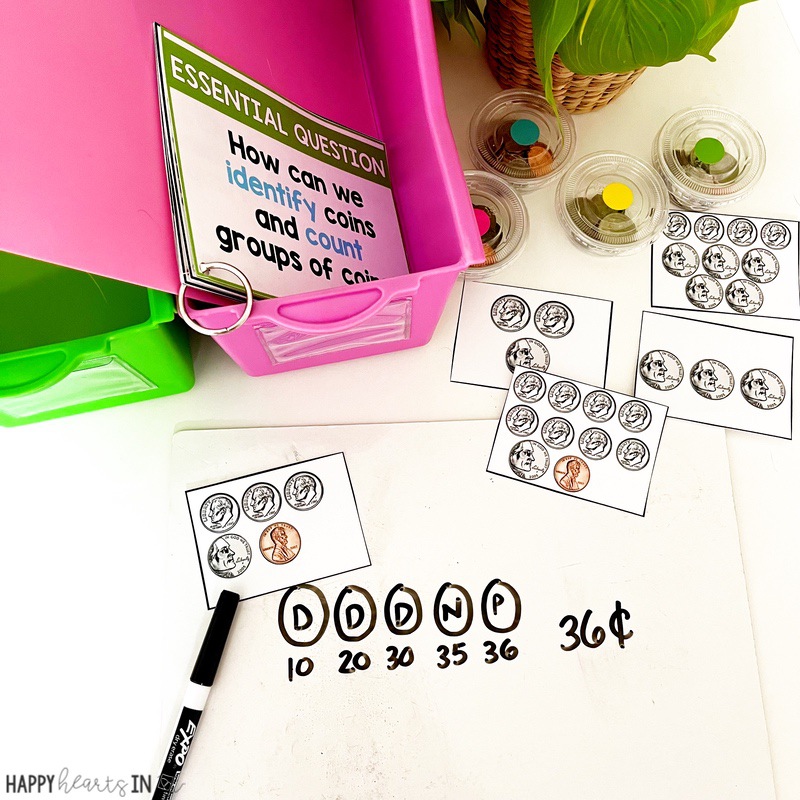
Money Tip 3: Use ALL the Visuals
Using visuals is so important for our learners! I like to utilize visuals in every part of my guided math block when teaching money to first graders!
⭐️ Slides for Money Mini Lessons
Interactive slides are my favorite way to introduce new math concepts! I love that they are large enough for all to see. I always have my students sit next to a math partner for turn and talks to share thinking during the lessons.
I also like to have students bring a dry erase board and marker so that everyone can be actively engaged during quick practice in the mini lesson!

⭐️ Math Wall
I also like to use money anchor charts and posters to keep track of our learning!
Throughout our money unit, I add posters to our Math Wall for students to reference.

These mini posters are perfect to have at teacher table for small group time!
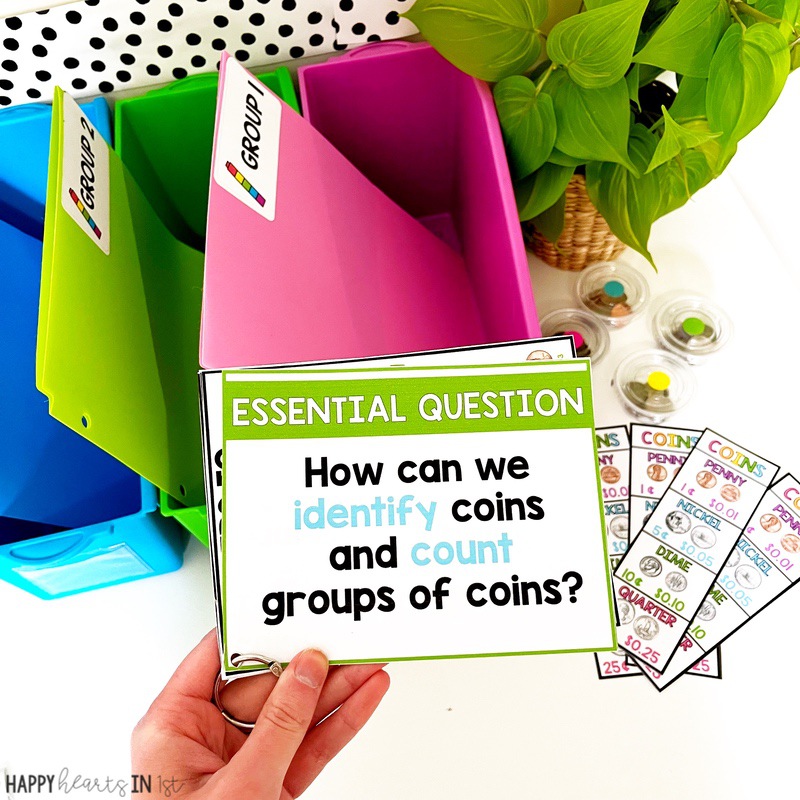
⭐️ Coin Helpers
These reference sheets are perfect to give to each student to keep in their math folder! Students can use them while working in math centers or independent practice!
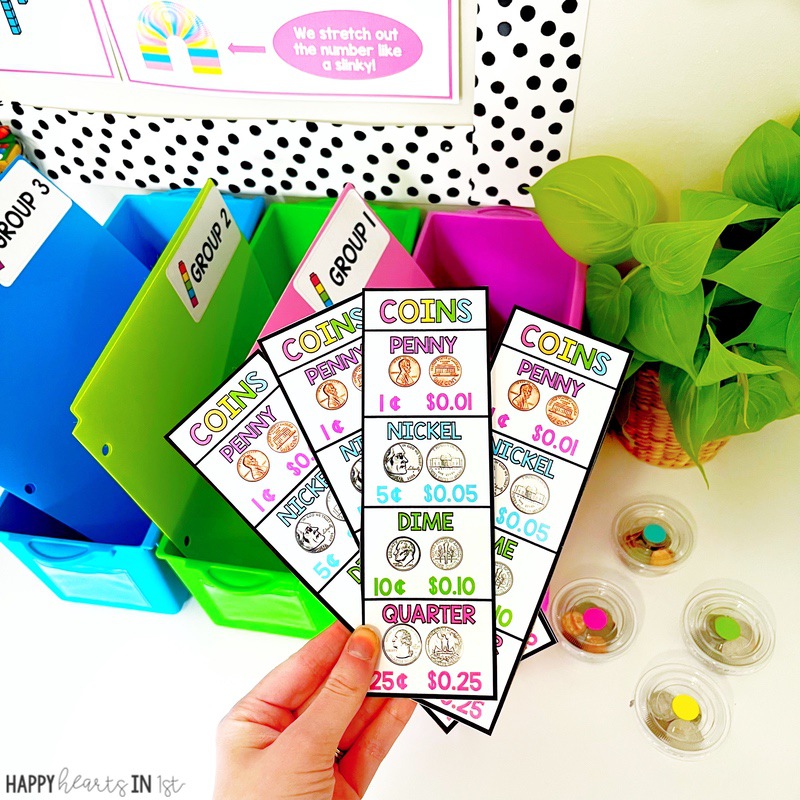
TIP 4: Counting Coins Step by Step
Next, I want to share the step by step process that I use for teaching money to first graders!
Step 1: Identify coins and their values
Before counting, it is important that students are able to recognize, name, and assign value to each of the coins! It is essential that they understand that the size of the coin does not determine its value. A dime is worth more than a nickel even though it is smaller!
We spend a few day introducing each coin during our whole group mini lesson and exploring and sorting the coins during our small group time.
Step 2: Practice counting like sets of coins
Once first graders have a good understanding of identifying each coin and the values of each coin, we move on to counting sets of coins.
It is so important not to move too quickly when teaching your 1st graders to count coins. Always start by counting like sets of coins first.
Example – count a group of all pennies, all nickels, all dimes, or all quarters.
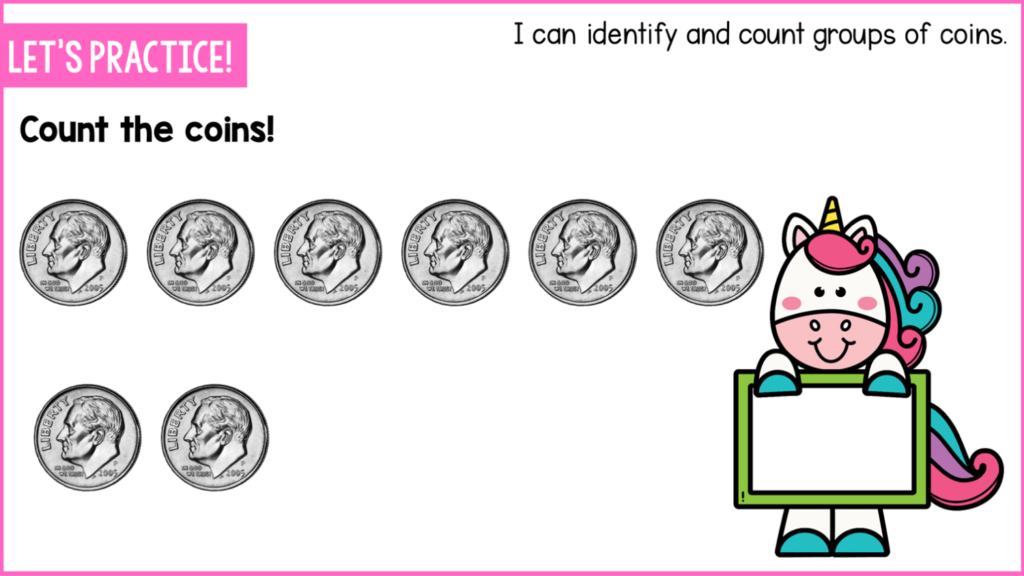
A Note about Quarters:
Quarters are tricky with teaching money to first graders because they don’t usually have a lo of background knowledge with skip counting by 25s.
To help students learn to count quarters, I like using a few different strategies:
- The Quarter Song
One way we practice counting by 25s is by chanting the numbers to the tune of the macerena! Students love doing the motions as the sing:
25,50,75,$1
25,50,75,$1
25,50,75,$1
Four quarters make $1!
We also find the numbers on a 120 chart and practice counting using the chart!
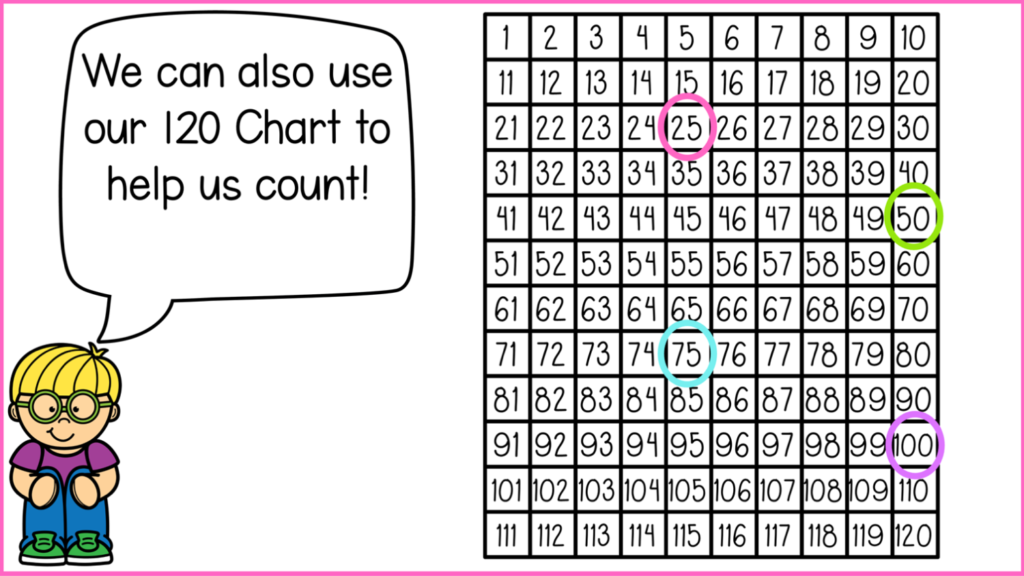
Step 3: Count Mixed Groups of Coins
I like starting with just 2 different coins in a group – Nickels and Pennies then Dimes and Pennies
Then once students have mastered this, we move on to counting groups of 3 coins – dimes, nickels, and pennies. When teaching money to first graders, it is important we break down the steps to counting coins and explicitly teach the process.
Students learn to:
- Sort the coins.
- Put the coins in order from greatest value to least.
- Start by counting the coins with the greatest value, then STOP
- COUNT ON the next type of coin
- Continue until you have the total value.

I like to teach my students to write money amounts in 2 ways- with the cent symbol and with the dollar sign. This will be helpful when they learn to count money amounts over $1.
TIP 5: Hairy Money (FREEBIE!)
Hairy Money is a game changer for teaching money to first graders! This is a different strategy for counting groups of coins that I always teach after the Skip Counting strategy. Students that have a hard time with skip counting in different ways usually do amazing with this strategy.
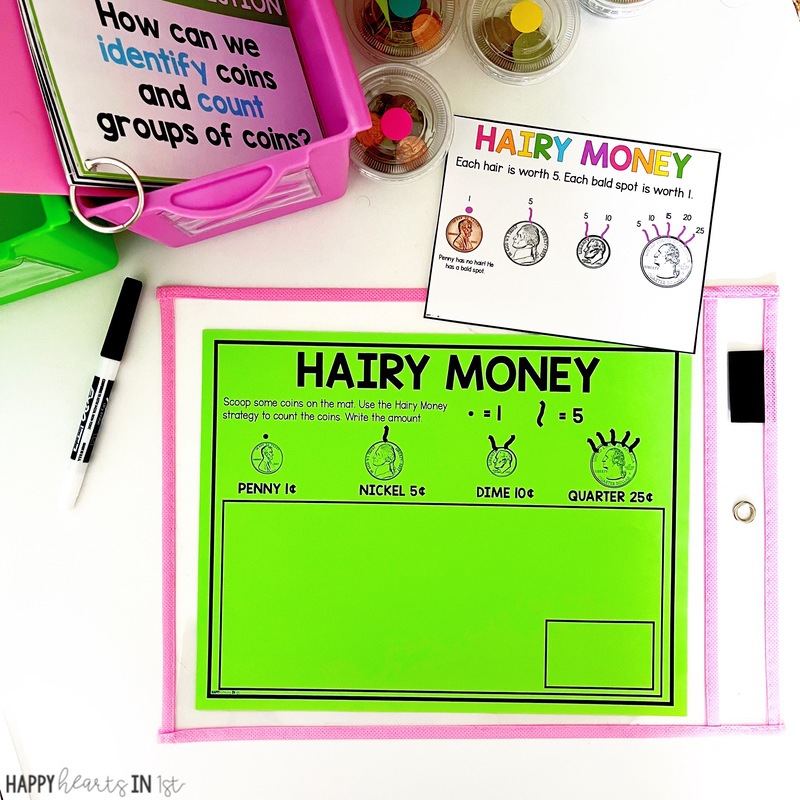
Tell students that we are going to give our coins some hair!
- Each hair equals 5.
- We need to count by 5s to see how many hairs each coin will get!
- The quarter is worth 25¢. Count by 5s as you draw hair on the quarter until you get to 25. The quarter gets 5 hairs.
- Repeat with the other coins. The dime will get 2 hairs and the nickel will get 1 hair.
- The penny is only worth 1¢ so it doesn’t get any hair. Instead it gets a bald spot. When we see the bald spot we remember to count by 1s.
How to Use Hairy Money to count groups of coins
When you use the Hairy money strategy to count a group of coins, the first step is drawing hairs. Draw hairs on all of the coins.
Now we simply count all of the hairs by 5s and count on the bald spots by 1s. This will give us the total amount of all of the coins.
Want to grab this free Hairy Money Anchor Chart and Activity to use in your classroom? Grab it here!
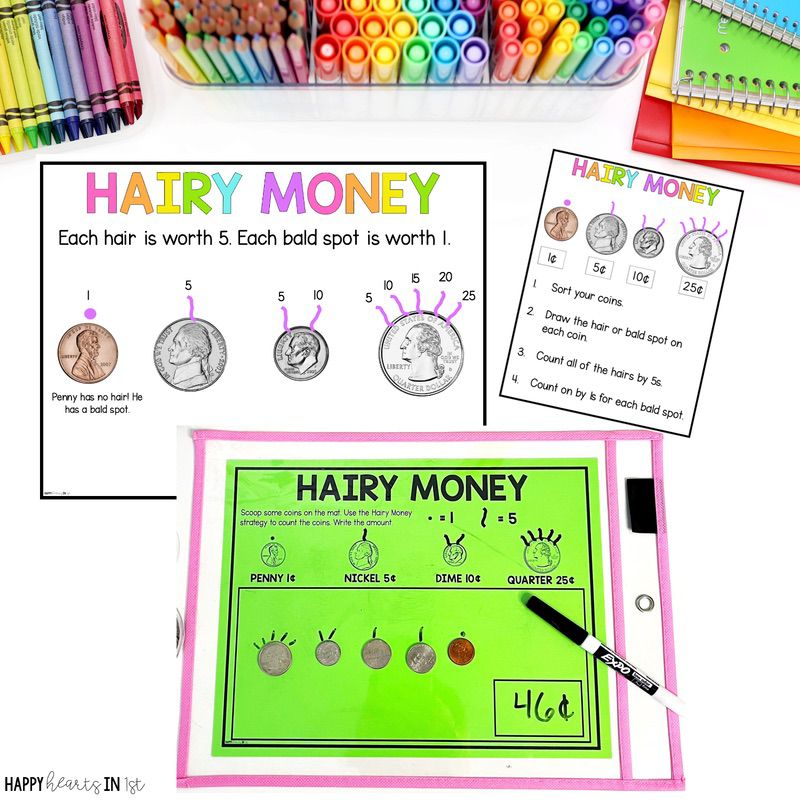
TIP 6: Games and Practice!
When teaching money to first graders, practice, practice and more practice is essential! My favorite ways for first graders to work on their coin counting skills are hands-on activities, games and songs! Here are a few of my favorites:
Money Math Mats
I love using math mats during my Guided Math Small Group Instruction! To prep, I simply print enough copies for each student in the group and slide into a dry erase pocket!
TIP: I also love re-using the activities later as a math center that students can do independently! It is so helpful that they are already familiar with the activity and I don’t have to spend a ton of time explaining it when introducing math centers!
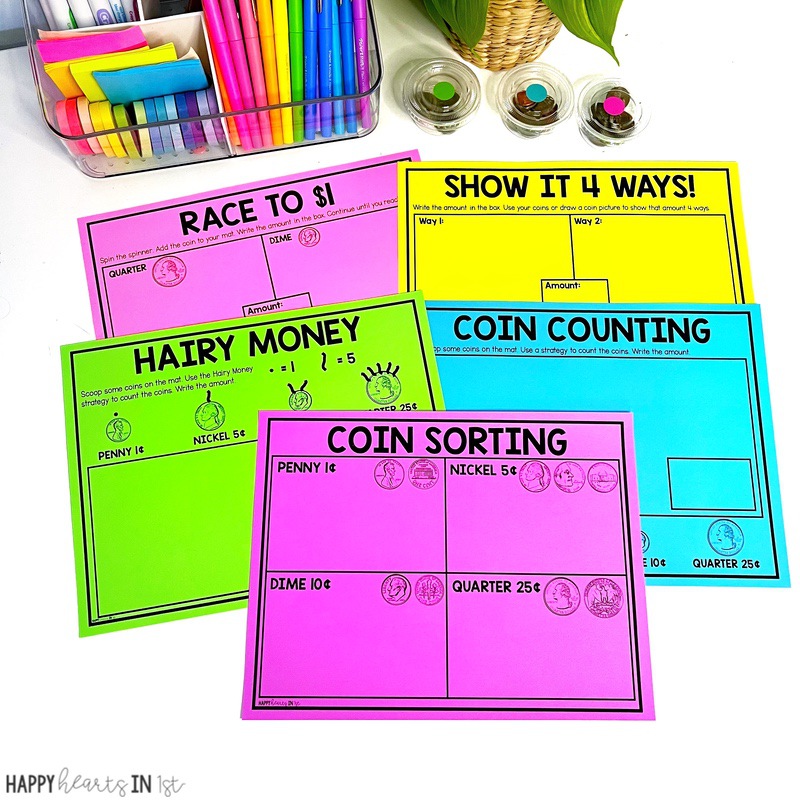
We use Math Mats to Practice:
- Coin Sorting
- Coin Counting
- Hairy Money
- Equivalent Coins
Shopping Mats
This is another one of my favorite activities for the small group table for practice with counting money.
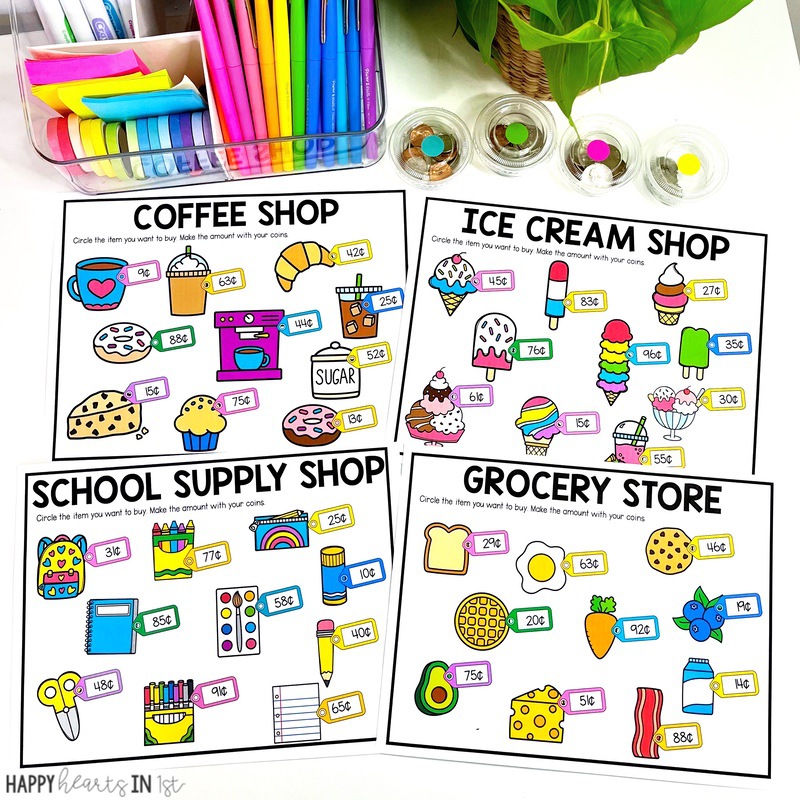
TO PLAY:
- Laminate the mats or put in dry erase pockets.
- Give each student or partner pair a mat to work on.
- Students will choose any item on the mat they would like to buy, and circle the item with a dry erase marker.
- Have students use their coins to make the amount.
- You can also challenge students to make the amount in different ways.
- Students can then circle a new item on the mat and make the amount.
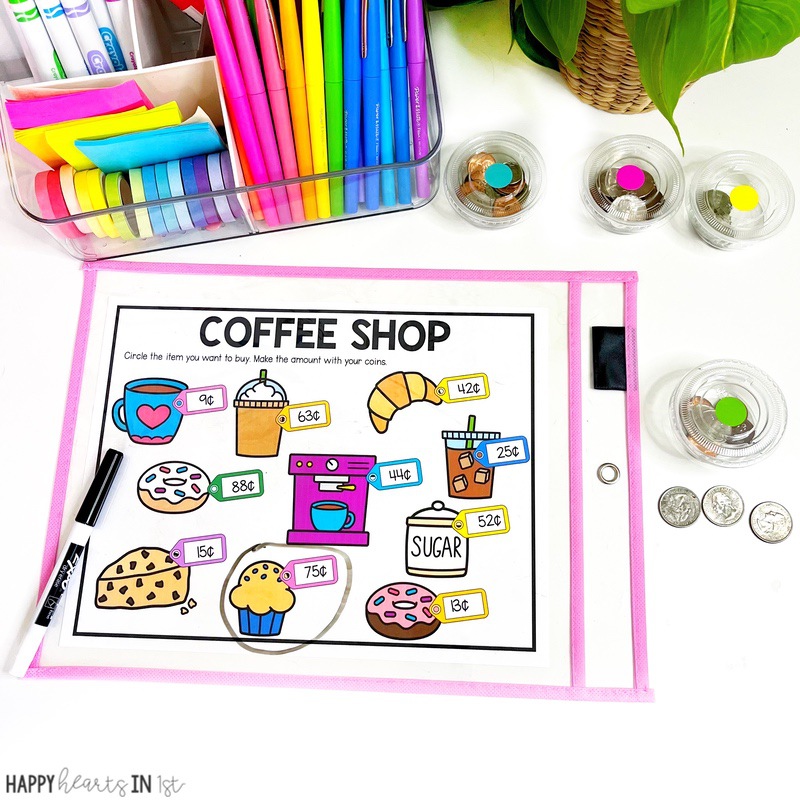
Set Up A Classroom Store
This is such a fun activity to practice making amounts with coins! Set out items with price tags. Students can select items they want to “buy.” They can then make the amount with the coins in their coin cups.

Count and Cover
This is a fun practice game that can be played whole group or at your small group table. Use the coin cards above to play! Choose a coin card and have students count to figure out the amount. They can then look on their Count and Cover game board and look for the amount that matches. The first student to get 4 in a row is the winner!
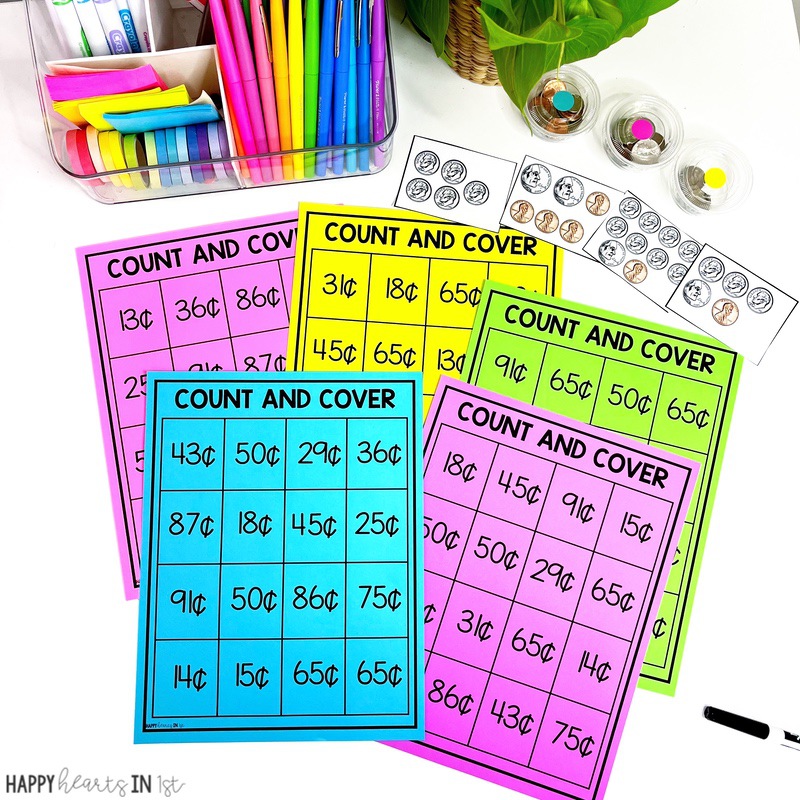
Race to $1
Use this game as a math small group activity or math center!
Laminate or put in dry erase pocket so that students can use a dry erase marker to write their current total as they play.
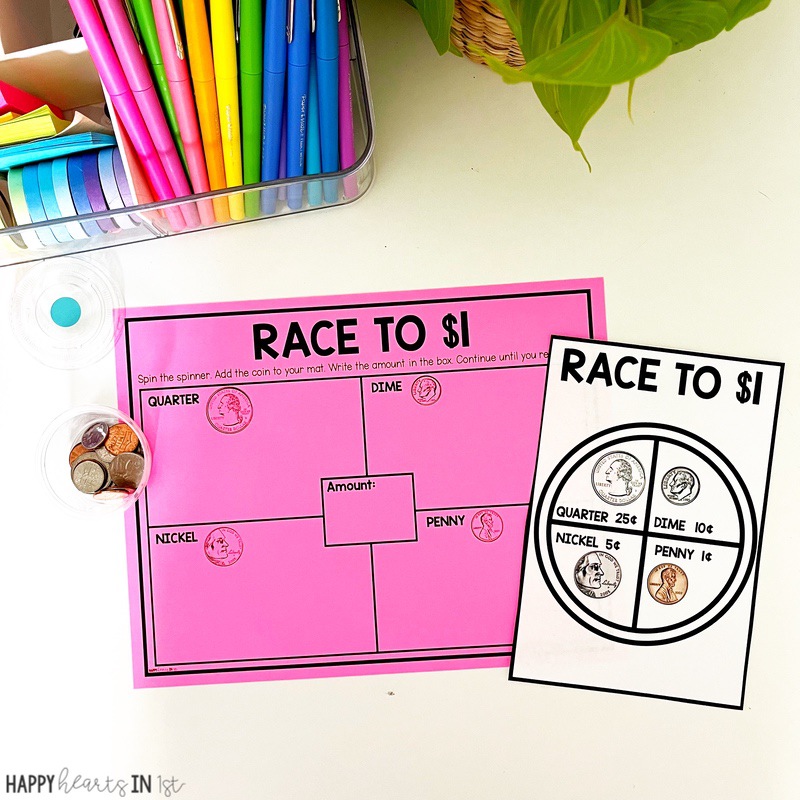
Solve the Room
Solve the Room is one of our favorite math center routines that we do every week in 1st grade! Each week, when students visit this center, they grab a clipboard and recording sheet and walk around the classroom looking for the cards. I tape the cards all over the room for students to find. They go to a card, solve, and write the answer on their recording sheet. They then visit our classroom Grading Station to check their own work. You can read more about how we run our math centers in 1st grade here!
Money Solve the Room is always a huge hit!
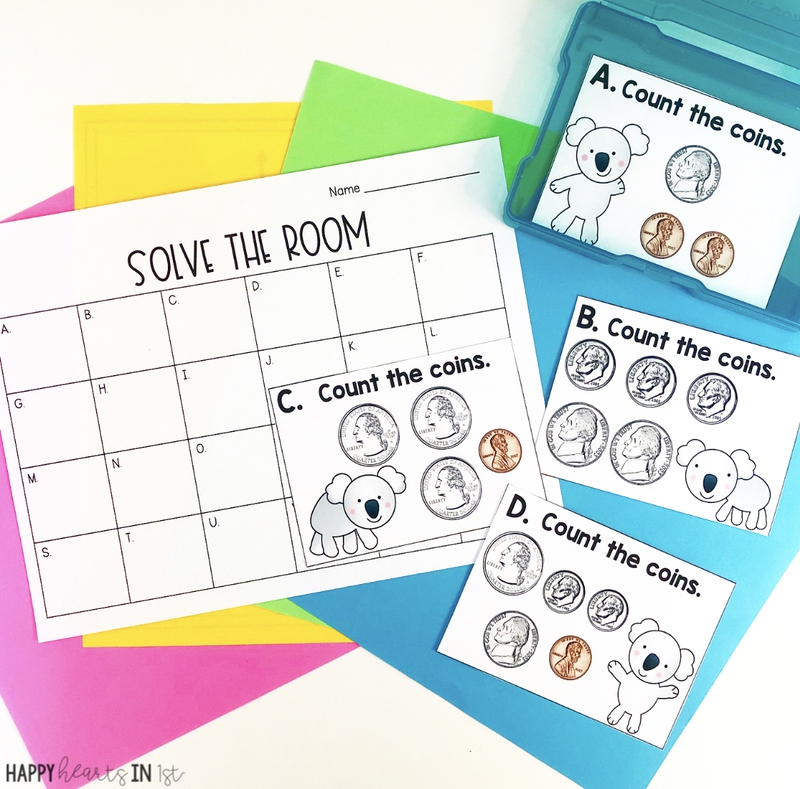
Find Money Solve the Room here!
Find Solve the Room for the Whole Year here!
Memory Math Match
This is another one of our favorite math center routines! Students use these matching cards to find pairs of coins and amounts. It can be played as a memory style game or use the cards whole group and play Find my Match! Read more about how we use Math Match Here!
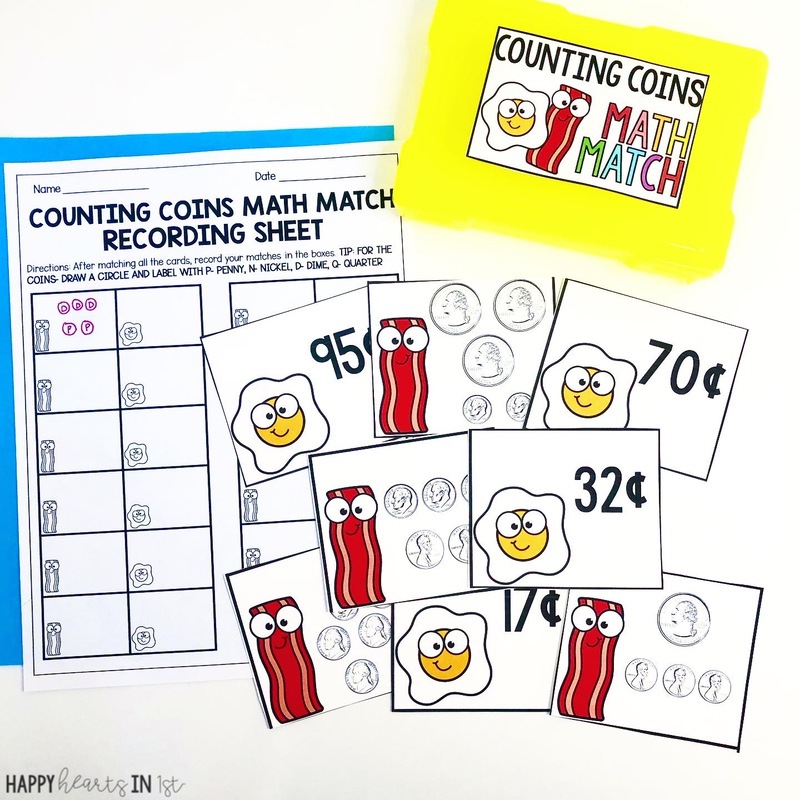
Find Math Memory Match Bundle here!
Independent Money Worksheets
These math worksheets are perfect for practicing the skills taught during your math mini lessons.
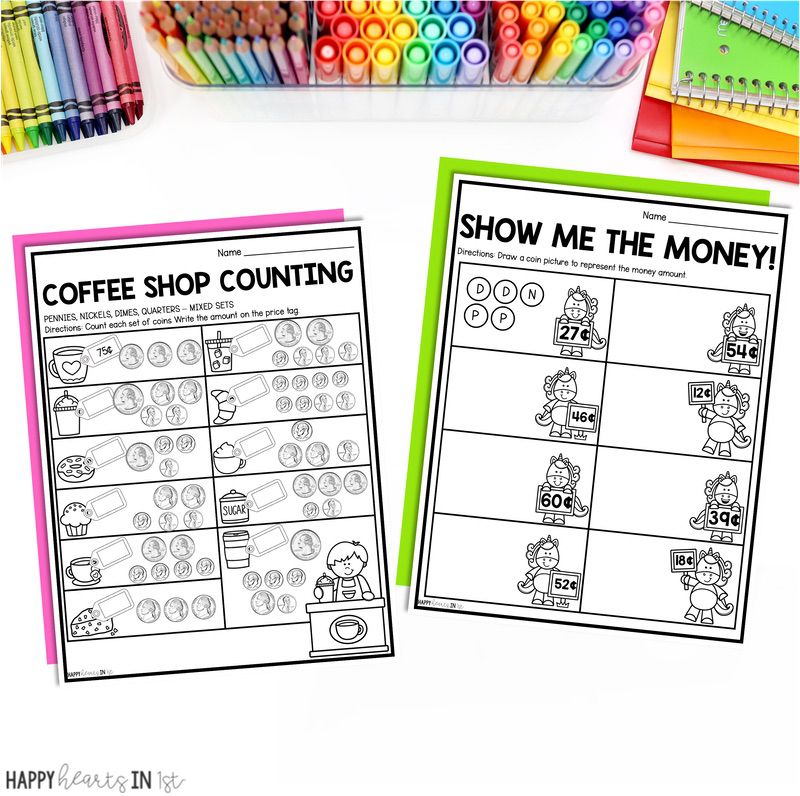
These can be used during math centers, for morning work, or sent home as extra practice!
These could also be used to put together Math Folders or packets for independent work time during math rotations.
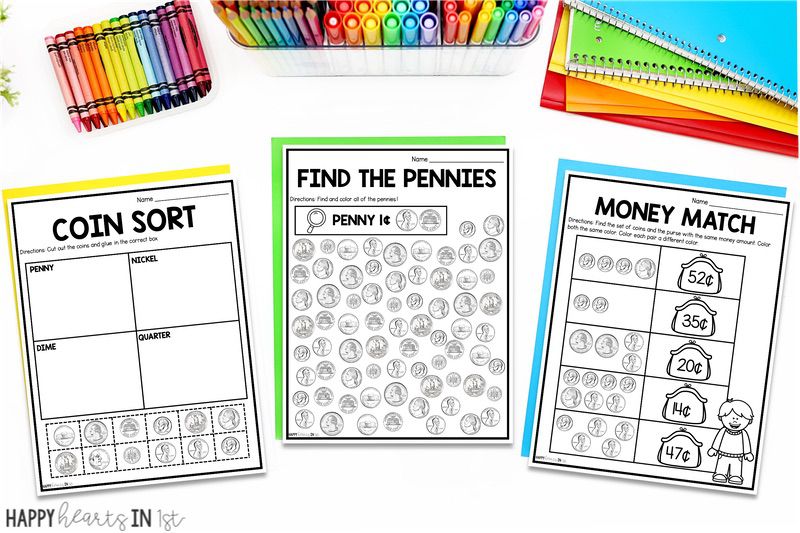
Our FAVORITE Money Song
If you’re looking for a catchy money song that will be stuck in your head all day long, look no further! This is a favorite in our first grade classroom. We listen to it daily during our money unit!
Money Craft
Students love completing this Piggy Bank money craft at the end of our money unit to celebrate learning!
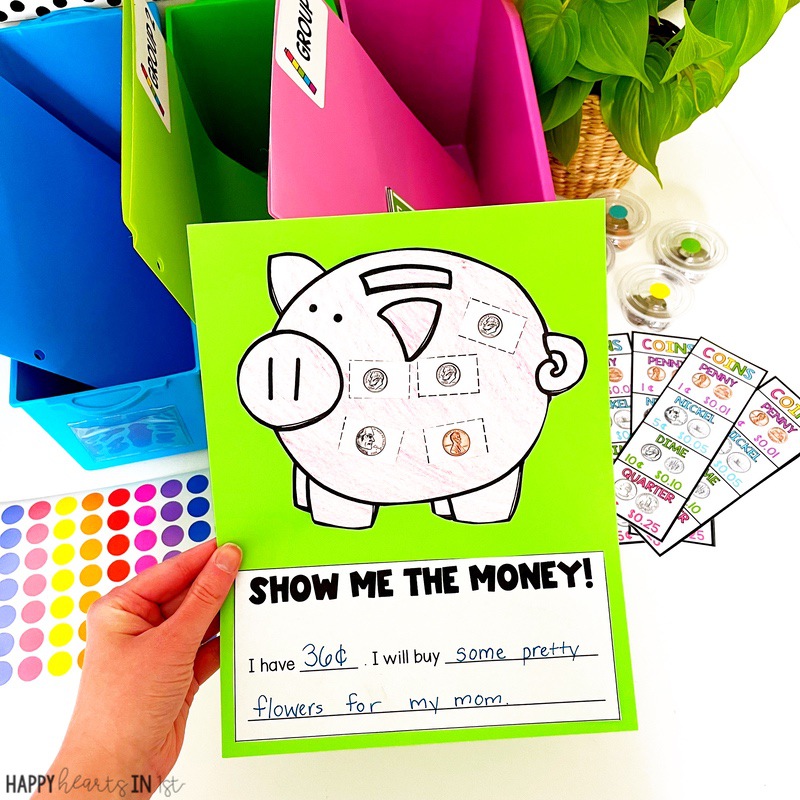
How do I assess when teaching Money to first graders?
Assessment is an important part of guided math! It no only tells us if students have mastered concepts at the end of a unit, but it also helps inform teaching decisions during a unit. There are 3 main ways that I assess in my guided math block.
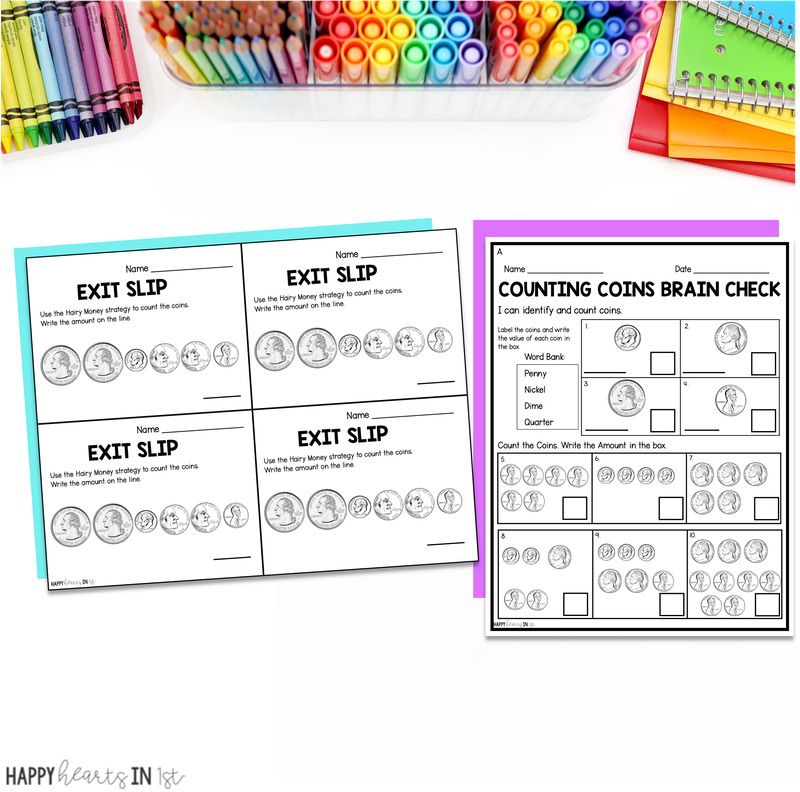
- Exit Slips: Giving quick exit slips at the end of a small group session is perfect for checking students understanding during a math unit.
- Observation: Along with exit slips, I use a lot of observation as a formative assessment. I keep anecdotal notes in my guided math planning binder! You can grab it for free here!
- Brain Check: At the end of a unit, I give a summative assessment over the standards we covered! In money unit I included two versions of the brain check so that one could be given as a pre-test and one as a post-test.
Want your Counting Money Unit planned for you?
You can grab this 500+ page resource that includes:
- ⭐️ Ready-To-Use Mini Lesson Slides
- ⭐️ Hands-on Activities to use during small group instruction, whole group, and math centers
- ⭐️ Anchor Charts and Mini Posters
- ⭐️ Money Worksheets and Independent Practice
- ⭐️ Assessment

I hope you got some great ideas for teaching money to first graders!
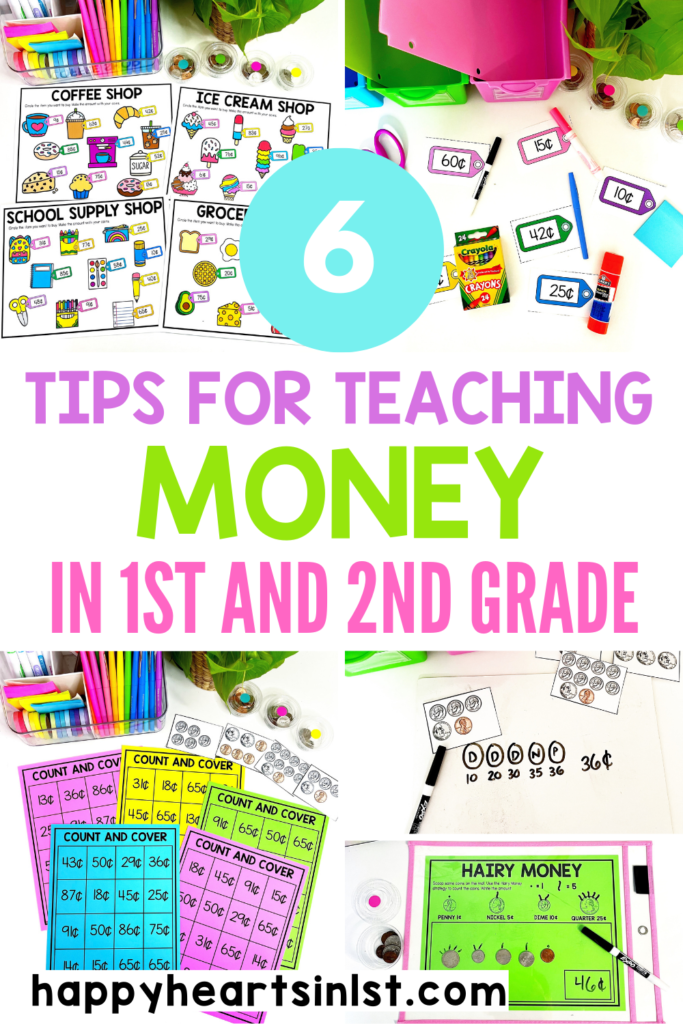
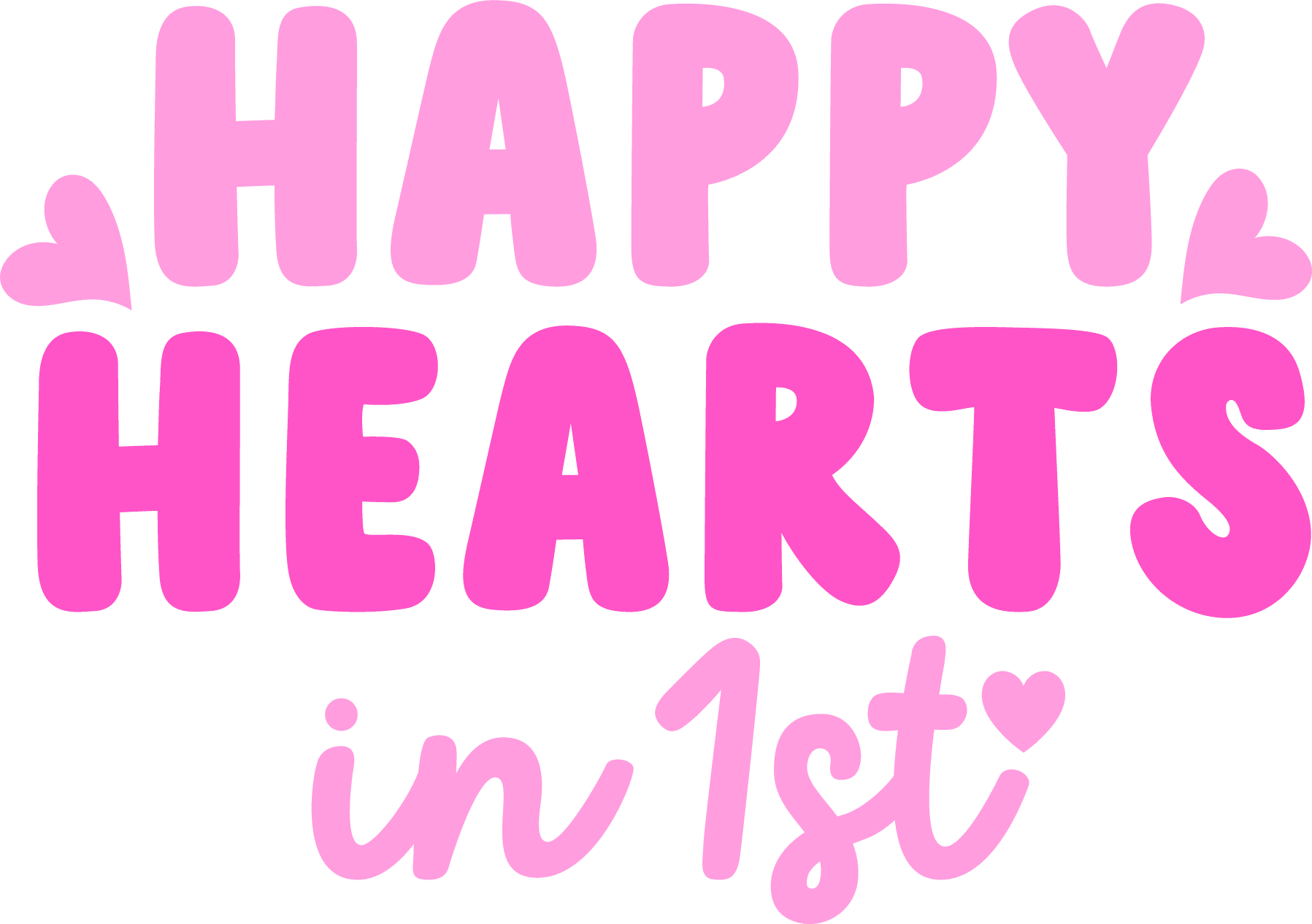
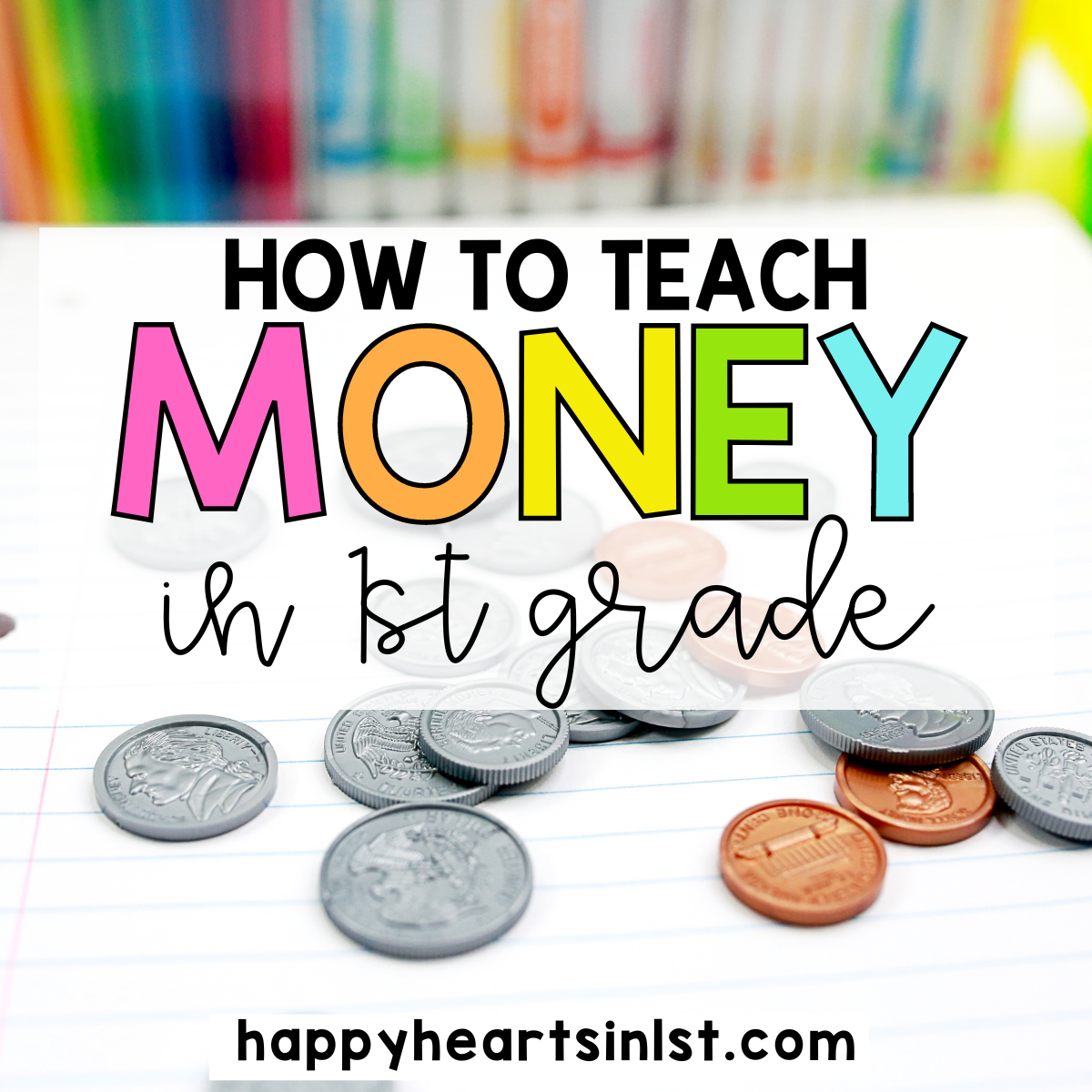
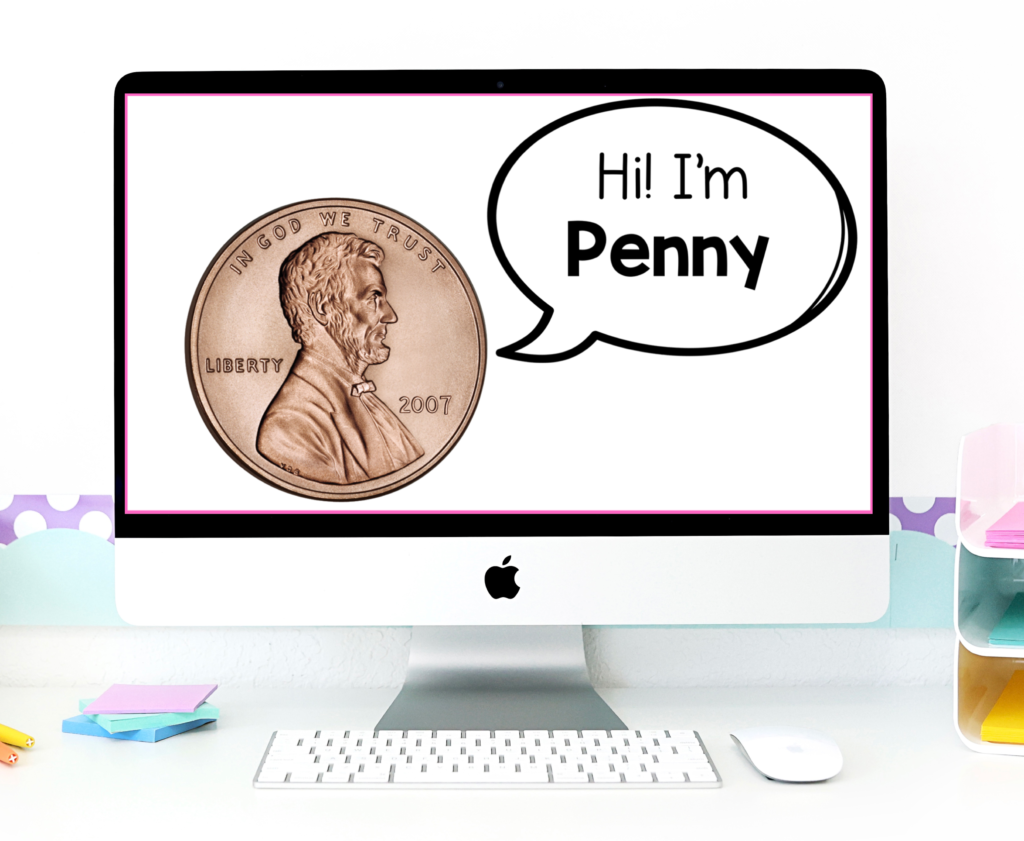
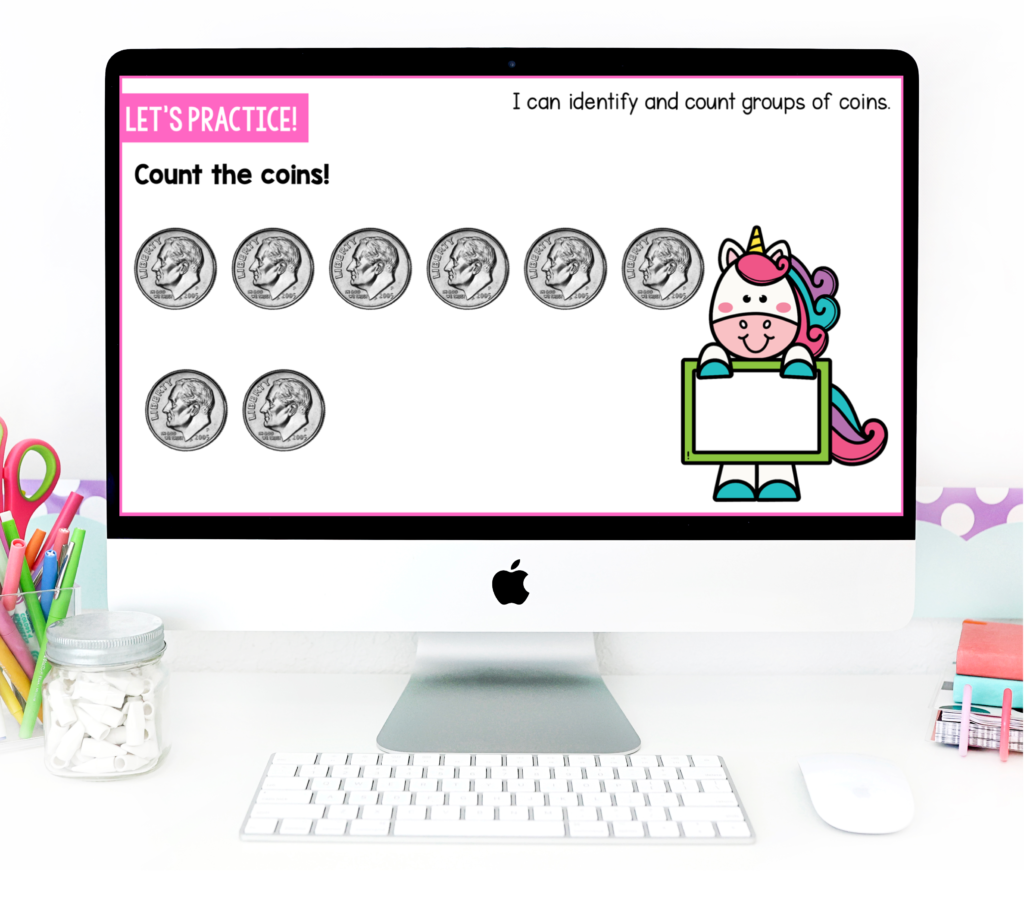
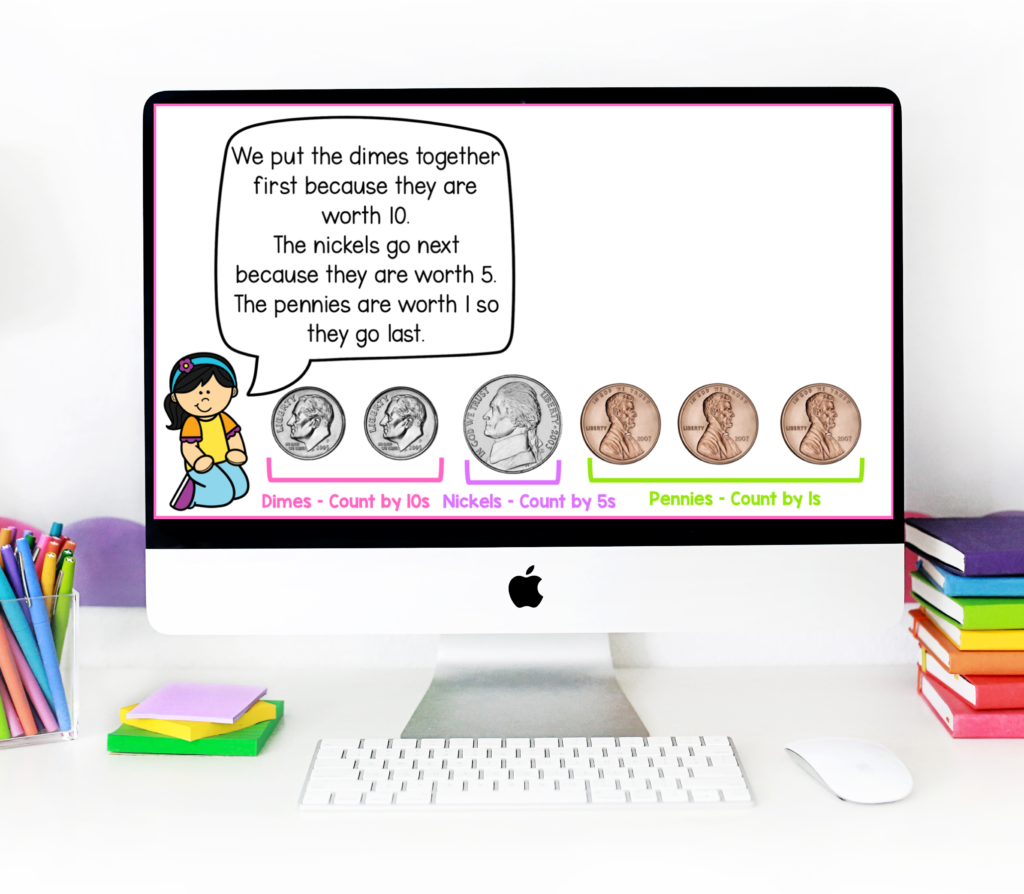
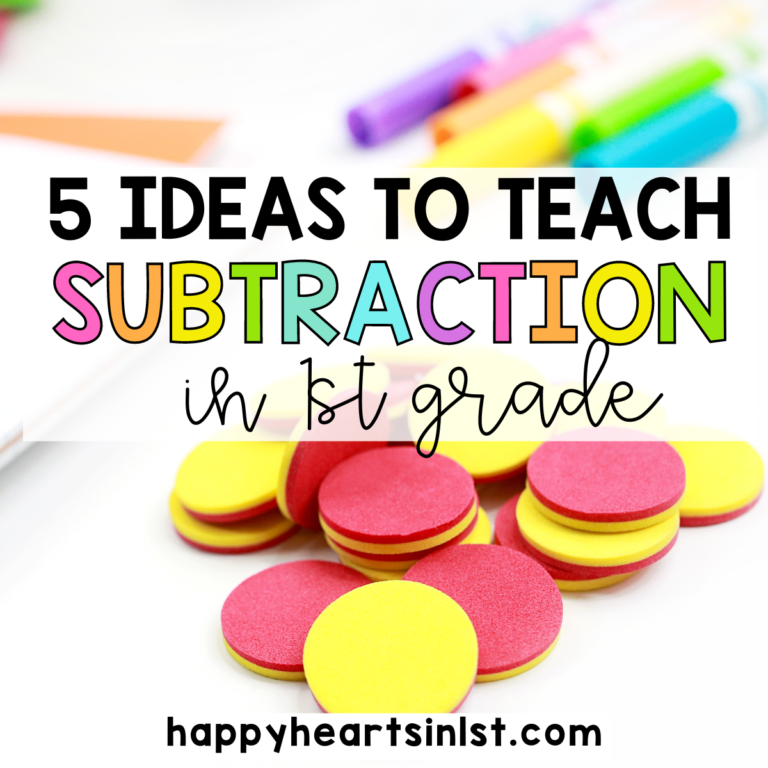
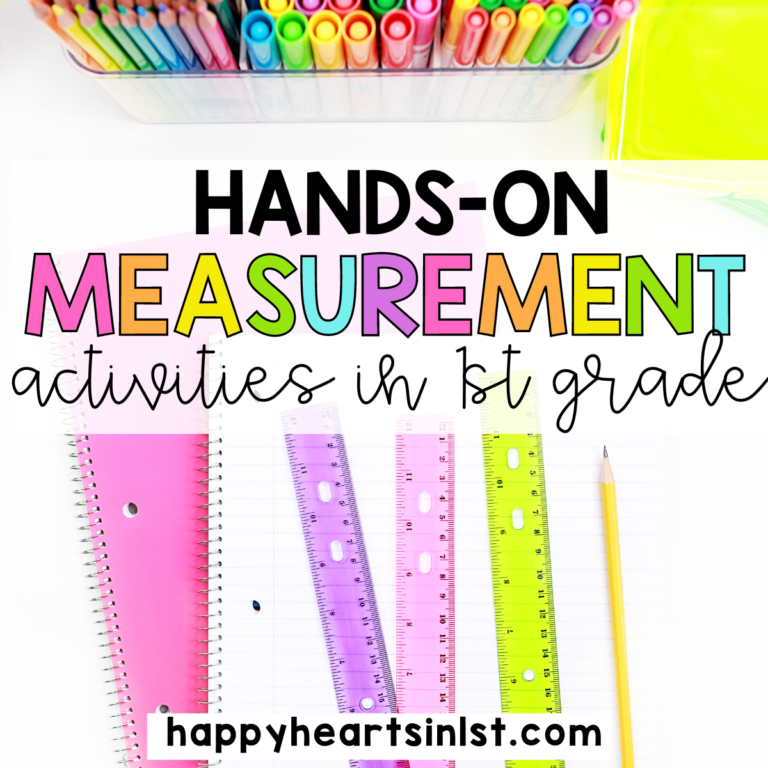
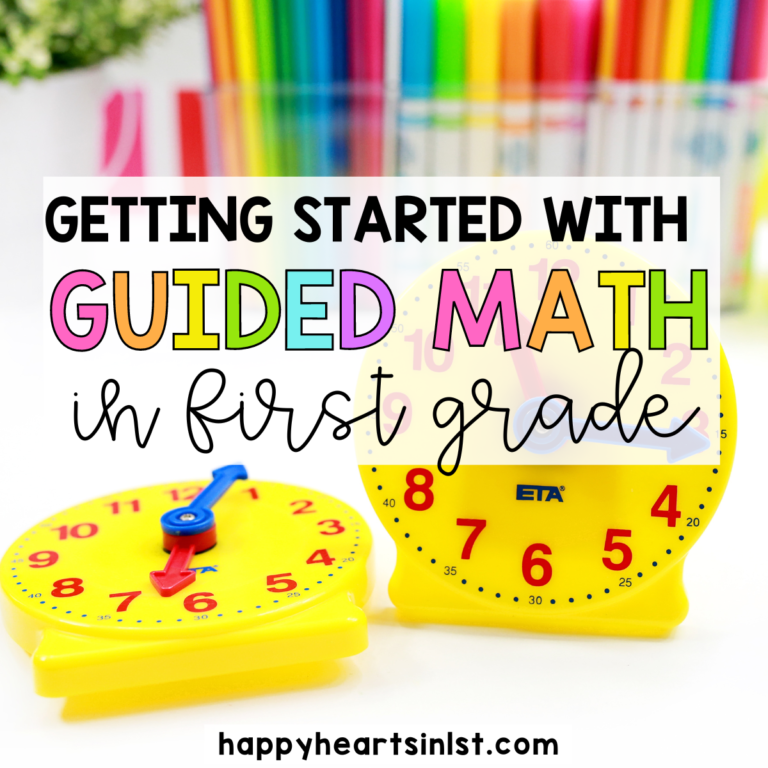
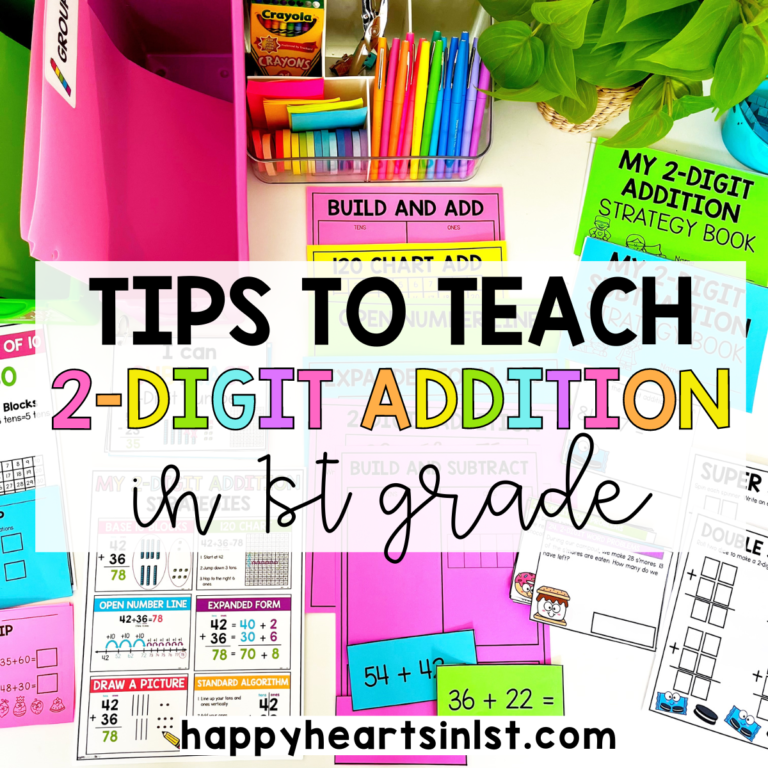

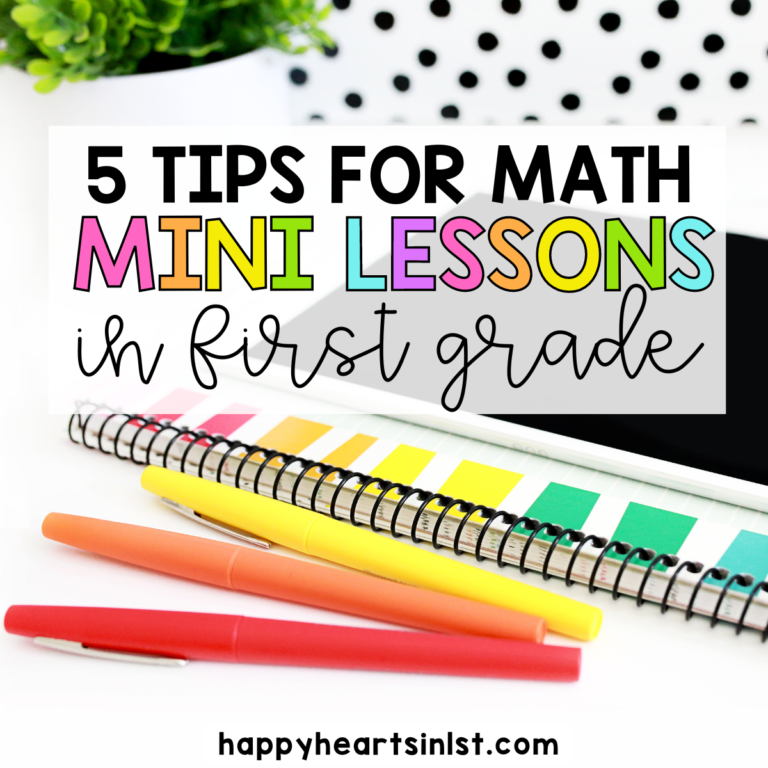
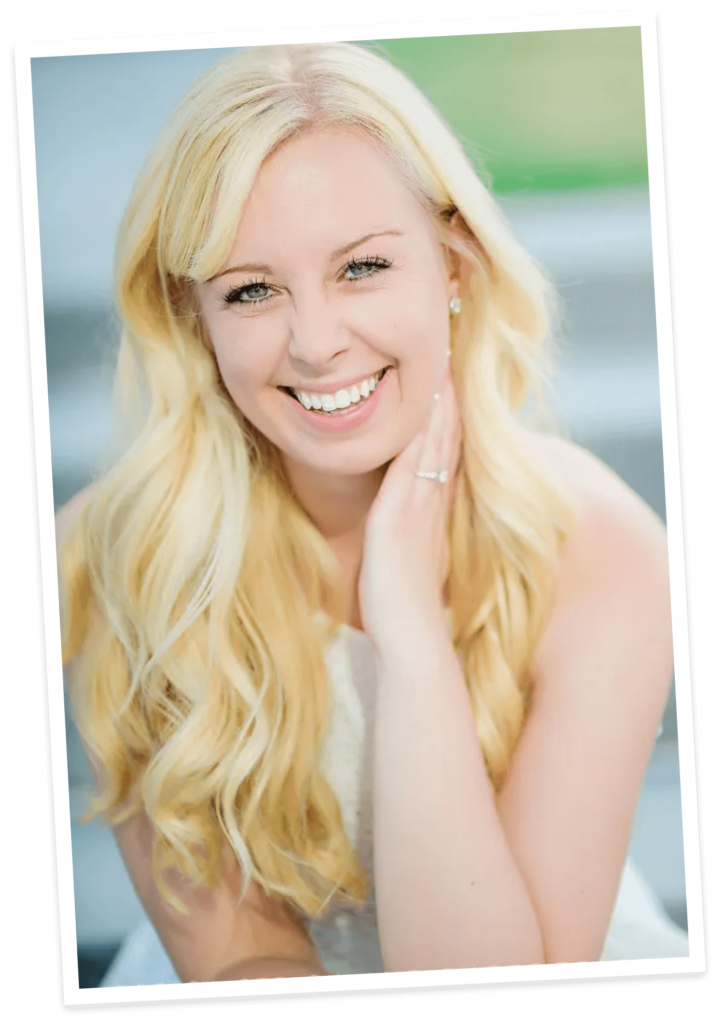
Fantastic ideas! I’m definitely going to apply a few in my math lessons.